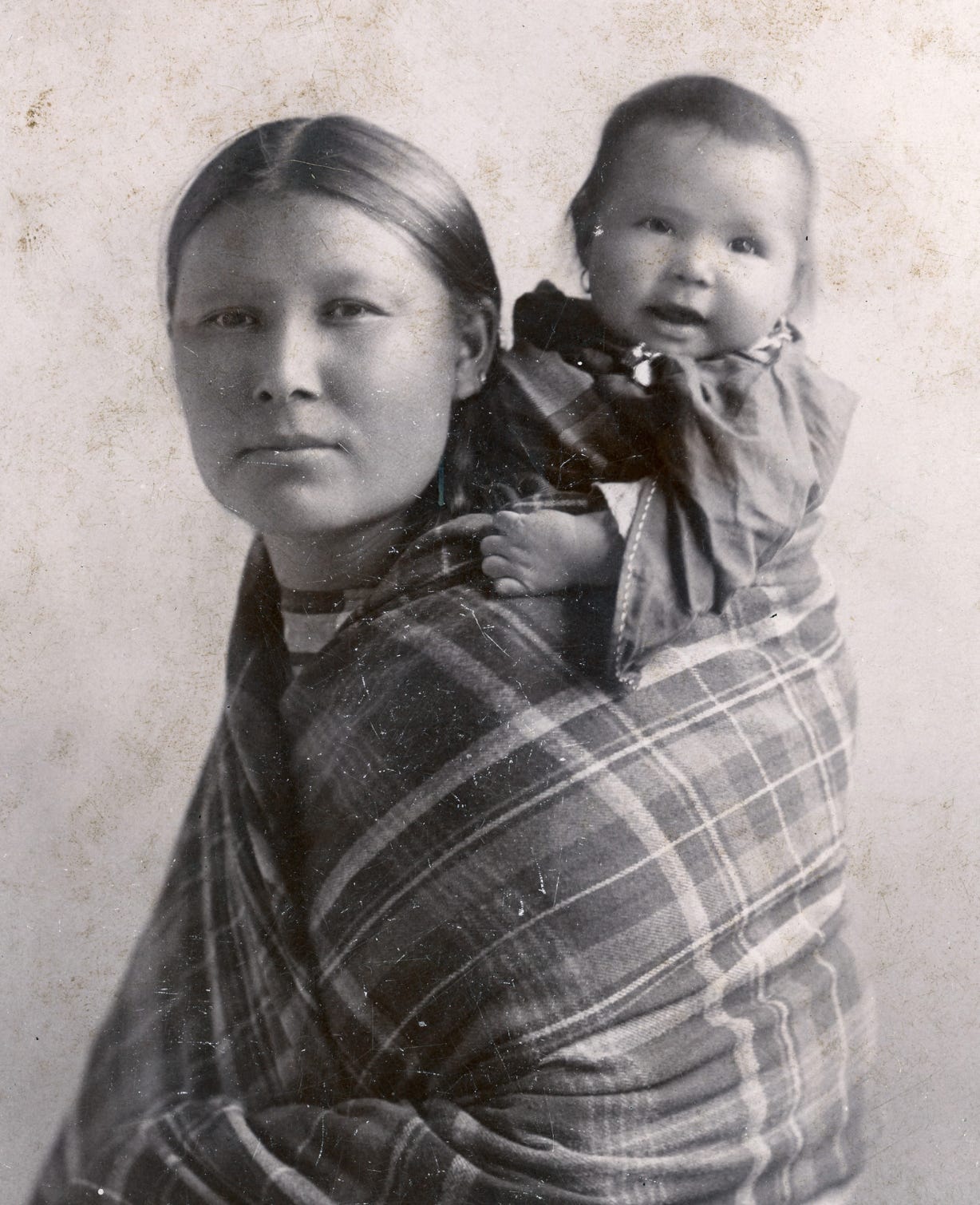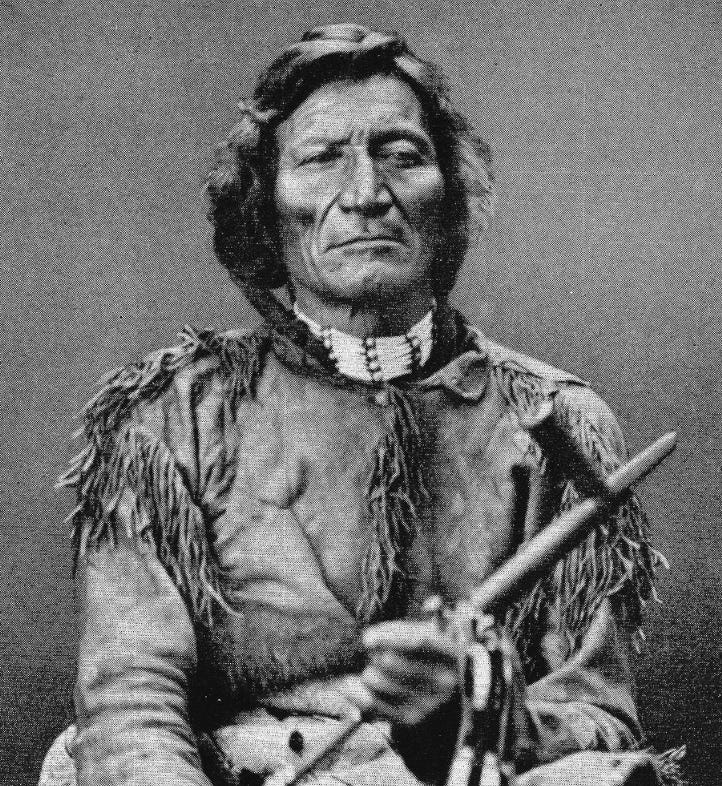From Montana Tribal Histories: “The Northern Cheyenne tell of a time when their people were far to the northeast, living along the Great Lakes and Hudson Bay as a fishing people. Tribal members today relate that some of their fishing songs from this time are still remembered. Oral history follows a tribal movement by canoe, across a large marshland, which is thought to be along the northern border of Minnesota and southern Ontario. The Cheyenne then settled along a lake, thought to be near the headwaters of the Mississippi, and practiced fishing and hunting small game. Documentation of the Cheyenne on a 1673 map locates them on the eastern side of the Mississippi, around the Great Lakes, south of Lake Superior and west of Lake Michigan. At this location, they had built permanent villages of earth lodges and had begun to grow corn as a significant addition to their diet of dried meat and other plant foods. It was also during this time that the Cheyenne began to travel west to hunt buffalo.”
In other words, they had nothing to do with Montana. From the same source, “The Cheyenne and Assiniboine experienced changes in their traditional economy as they relocated to different regions. The Cheyenne were once a fishing economy living in the Great Lakes region. They then moved south and west, transitioning to an agricultural economy, building and living in permanent homes. The Cheyenne were displaced by other tribes and found themselves on the plains, living in bands on a very large expanse of territory. Their transition to a plains horse culture and economy was necessary as was their alliance with Sioux tribes in the face of an increasing intertribal conflict due largely to the dispossession of tribes as the colonies and settlers pushed west. As economies changed, cultural adaptations were made. Some members of the Northern Cheyenne tribe still recall some of the fishing songs from long ago. “Eventually, the Tse-tsėhésė-ståhase left these lakes in the cold land of the north, migrating in canoes…After a time they came to a land of great marshes filled with reeds and grass…Some days later the scouts returned to camp and told the people that there was a large lake bordered by open prairie on the other side of the marshlands. The people broke camp, loaded their canoes and, following the trail of poles, moved safely through the marsh. This was probably the great marshland of southern Ontario and northern Minnesota.”
I’m about to prove that the tribes weren’t primitive and were capable of agriculture and more permanent earthen homes, which ought to have spurred great advancements for them but didn’t, and how I suspect it is due to their history on this continent being much younger, and their primitive living a result of collapse or catastrophe that forced them to start over.
For those interested in the “White Indians” that Europeans encountered, along with their language’s affinity to the Highland language of the Irish and Wild Scots, as well as the Church’s efforts to prove this affinity being evidence that all men are descended from Adam, read my latest book Spirit Whirled: Terminalia.
Become a member to access the rest of this article.
Keep reading with a 7-day free trial
Subscribe to Ancient History, Mythology, & Epic Fantasy to keep reading this post and get 7 days of free access to the full post archives.







